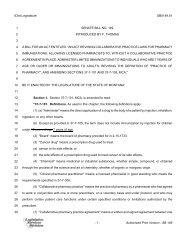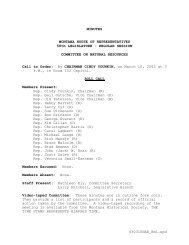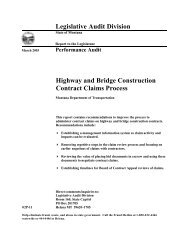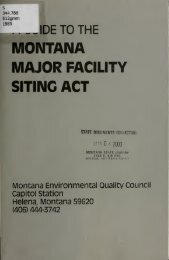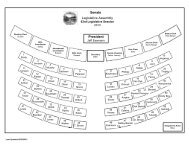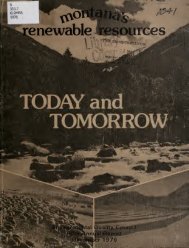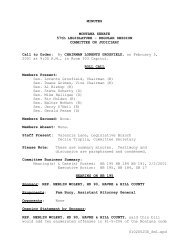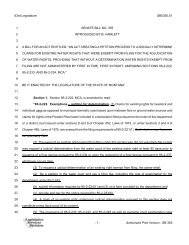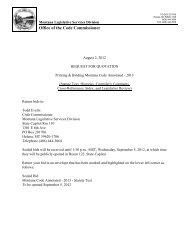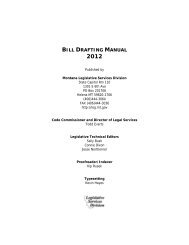Public Comment. Volume III - Montana Legislature
Public Comment. Volume III - Montana Legislature
Public Comment. Volume III - Montana Legislature
You also want an ePaper? Increase the reach of your titles
YUMPU automatically turns print PDFs into web optimized ePapers that Google loves.
DRAFT, 4/9/85<br />
for the possibility that herbicides may .-be accidentally -..<br />
introduced .to other than the -designated portions - of the - .<br />
ROW. (See vegetation discussion of noxious weed control.)<br />
The same general approach discussed under items<br />
(3) and (4) above should be taken, with immediate notification<br />
of the appropriate agencies and personnel<br />
being given priority equal to' immediate containment.<br />
Procedures should comply with the law, regulatory<br />
guidelines, and the best technology currently available.<br />
Application of herbicides is a licensed activity<br />
and is done under strict supervision, and as such,<br />
response should be nearly instantaneous.<br />
8.0 HYDROLOGY AND WATER QUALITY IMPACT MITIGATION<br />
8.1 General<br />
A wide variety of state and federal regulations and permit<br />
processes are in place to assure that overall water quantity and<br />
quality is not altered or diminished by activities such as the<br />
proposed Tongue River Railroad. Detailed permit applications are<br />
submitted to various agencies for the purpose of assuring that<br />
construction and operational activities on or 'near any waterways<br />
are conducted in such a mdnner as to provide minimal impact to<br />
those areas. Permit processes in which the Applicant is<br />
currently involved include:<br />
(1) US. Army Corps of Engineers "404" Permit process for<br />
all bridges and other structures occurring on designated<br />
streams (perennial). This process is required<br />
for. each major bridge crossing of the Tongue River and<br />
Otter Creek as well as each area where rip-rap is to be<br />
installed. This process requires detailed environmental<br />
data as well as construction data. Permits are<br />
issued with accompanying stipulations to limit environmental<br />
impact to the greatest degree possible.<br />
(2) The "310" Permit process, jointly administered by the<br />
local Conservation Districts and the Water Quality '<br />
Bureau of the <strong>Montana</strong> Department of Health and Environmental<br />
Sciences. This process is very similar to the<br />
"404" process previously discussed. Similar procedures<br />
for attaching stipulations to a permit also are<br />
followed.<br />
(3) Temporary Di'scharge or "Turbidity Exemption" permits<br />
are being sought from the Water .Quality Bureau of the<br />
<strong>Montana</strong> Department of Health and Environmental Scien-<br />
EQC Eminent Domain Study -205-



